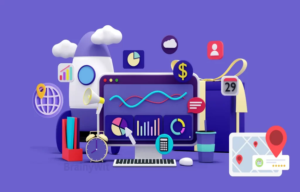How to Optimize Your SaaS Lead Generation Strategy

For Software as a Service (SaaS) companies, lead generation is the backbone of growth. Unlike traditional businesses, SaaS relies on recurring revenue models where acquiring and retaining customers is critical. But with increasing competition in the SaaS industry, simply generating leads is no longer enough. You need to optimize your lead generation strategy to ensure you’re attracting qualified prospects, reducing acquisition costs, and improving conversions.
In this article, we’ll explore practical steps you can take to optimize your SaaS lead generation strategy for maximum impact.
Why SaaS Lead Generation Needs Optimization
SaaS businesses face unique challenges:
- Longer sales cycles where prospects evaluate multiple solutions before committing.
- High competition in nearly every niche, making it harder to stand out.
- Complex buying decisions involving multiple stakeholders.
- Subscription-based models requiring continuous acquisition to balance churn.
Optimizing your strategy ensures that your efforts focus on the right audience, deliver consistent results, and contribute to sustainable growth.
1. Define Your Ideal Customer Profile (ICP)
The first step to optimizing SaaS lead generation is identifying who your ideal customers are. An Ideal Customer Profile (ICP) helps you understand:
- Industry and company size
- Pain points and challenges
- Decision-makers and buying roles
- Budget and purchasing power
When you have clarity about your ICP, you can tailor campaigns, messaging, and offers to resonate with the right prospects instead of wasting resources on unqualified leads.
2. Build a Content Marketing Engine
Content marketing is one of the most effective SaaS lead generation strategies. To optimize it:
- Focus on pain points: Create blog posts, guides, and videos addressing customer challenges.
- Leverage SEO: Optimize content for high-intent keywords so prospects can find you organically.
- Offer gated content: Use eBooks, whitepapers, and reports as lead magnets.
- Showcase case studies: Highlight real customer success stories to build trust.
A consistent content engine not only attracts traffic but also nurtures prospects at different stages of the funnel.
3. Optimize Your Website for Conversions
Your SaaS website is your most important lead generation tool. A visually appealing site isn’t enough — it must convert visitors into leads. Key optimization tactics include:
- Clear CTAs (Calls to Action): Encourage visitors to sign up for free trials, demos, or newsletters.
- Landing pages: Build targeted pages for campaigns with a single conversion goal.
- Live chat and chatbots: Engage visitors in real-time and answer questions instantly.
- Page speed and UX: A slow or confusing site drives potential leads away.
Every page should be designed with conversion in mind.
4. Use Free Trials and Freemium Models Wisely
For SaaS businesses, offering free trials or freemium versions is a proven way to generate leads. However, optimization is key:
- Keep the trial period focused: Long enough to show value but short enough to create urgency.
- Provide onboarding support: Offer tutorials, product tours, and email guidance.
- Track usage behavior: Identify engaged users and follow up with personalized offers.
When optimized, trials can turn curious visitors into paying customers.
5. Leverage Multi-Channel Marketing
Don’t rely on a single channel for leads. To optimize results, diversify your approach:
- SEO and organic traffic for long-term growth.
- PPC campaigns to capture high-intent leads quickly.
- Social media marketing to build brand awareness.
- LinkedIn outreach for B2B lead generation.
- Email campaigns to nurture existing leads.
By balancing inbound and outbound strategies, you’ll create a steady, scalable pipeline.
6. Personalize Lead Nurturing Campaigns
Not every lead is ready to convert right away. That’s where lead nurturing comes in. To optimize:
- Segment leads by behavior, demographics, or stage in the funnel.
- Send personalized email sequences that deliver relevant content.
- Use marketing automation tools to scale nurturing without losing personalization.
- Score leads to prioritize those most likely to convert.
Personalization ensures your communication resonates with prospects and increases conversion rates.
7. Align Sales and Marketing Teams
A common challenge in SaaS is the gap between sales and marketing. When these teams aren’t aligned, leads fall through the cracks. To optimize collaboration:
- Define shared goals and KPIs.
- Establish clear criteria for lead qualification.
- Use a unified CRM system for visibility across teams.
- Hold regular meetings to review performance and feedback.
Alignment ensures marketing generates the right leads and sales has the tools to close them.
8. Measure and Optimize Continuously
Optimization is an ongoing process. To ensure success, track and analyze key SaaS lead generation metrics:
- Conversion rate (visitor-to-lead and lead-to-customer)
- Customer acquisition cost (CAC)
- Customer lifetime value (CLV)
- Cost per lead (CPL)
- Trial-to-paid conversion rate
Use A/B testing to refine landing pages, emails, and CTAs. Double down on strategies that work and adjust those that don’t.
Final Thoughts
For SaaS businesses, lead generation is not just about filling the pipeline — it’s about attracting the right leads and converting them into long-term customers. By defining your ideal customer profile, building a strong content strategy, optimizing your website, offering meaningful trials, and nurturing leads with personalization, you can significantly improve your results.







